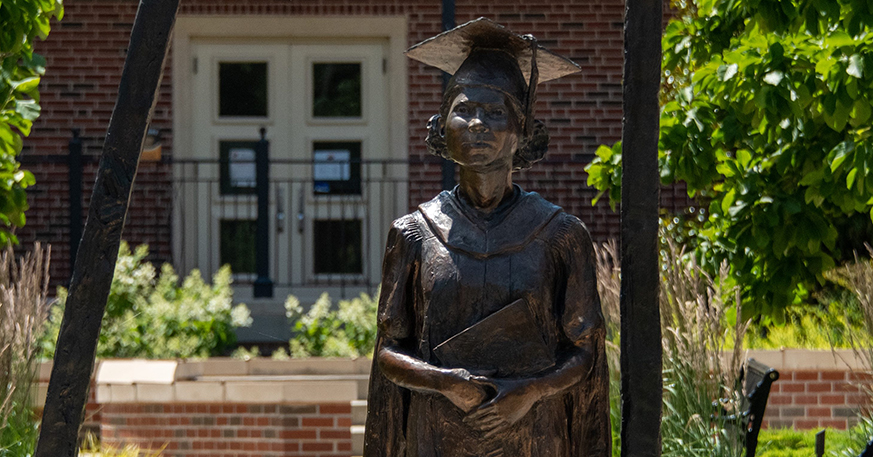By Rachel Whitney, Curator, Sapulpa Historical Museum
The Oklahoma Daily, a student newspaper of the University of Oklahoma, featured a front-page headline: “Racial Barrier Blasted.” This article appeared on June 11, 1949. “The Negro undergraduate barricade at the university crumbled Friday. Governor Roy J. Turner signed the new law Friday permitting Negroes to attend state colleges and universities for white students if equal courses are not offered at Langston…
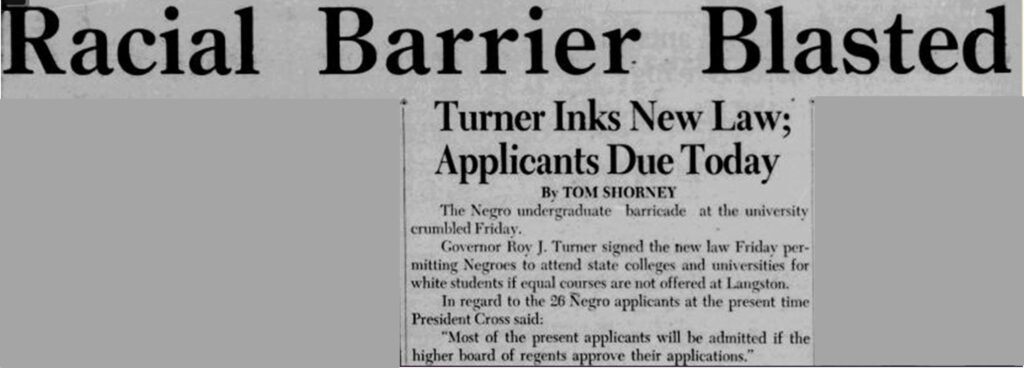
“…The higher board of regents will determine if there is an equal course offered at Langston, and if there is not, they will admit the students to the university of their choice. A senate amendment to the bill states that instructions must be on a segregated basis, and either the Negro students be placed in a separate classroom or be given instructions at different hours from other students.”
Based on this article, there were 26 students who had applied for admission. One student had previously enrolled, but withdrew their application. One graduate student applied, as well. Many of these 26 students that had applied were from Oklahoma City; there were others from the Tulsa area, too, such as Sand Springs, Tulsa, and Sapulpa.
Nancy O. Randolph applied for admission at Oklahoma A&M; Oklahoma A&M, short for Agricultural and Mechanical, College was the former name of Oklahoma State University (OSU); most articles referring to this school, during this time, either referred to the school as A&M or the Aggies.
“The Randolph family migrated from Colbert, OK to Sapulpa, OK in 1919. They quickly discovered themselves to be relegated to segregated schools, theaters, water fountains, and all other public accommodations. Similar to other towns in Oklahoma, signs were posted indicating that public facilities were to be used based on separate black and white race designations.”
Many of these segregation laws were enacted in Oklahoma as early as 1890 and continued until 1950, or later.
“In spite of the challenges of other early social situations in Sapulpa, [Nancy] maintained fond memories of family life in that small town…She completed high school at Booker T. Washington in Sapulpa. With support from her siblings and parents, she was able to enroll at Langston University for the fall 1944 term.”
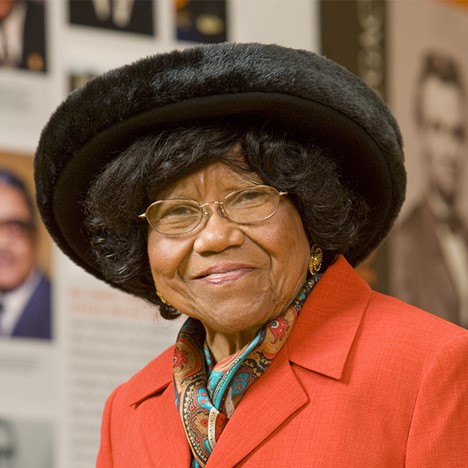
At Langston University, Nancy earned her Bachelor’s Degree in Home Economics in 1948. In the same year, she began her teaching career. “She procured a position at the all-black Dunjee Public School in Choctaw.” She taught at Dunjee High School in Spencer.
“The Dunjee community recognized [her] as an exceptional teacher because of her ability to involve them, along with their children, in promoting home improvement.” She married [in 1953] a fellow educator, Fred C. Davis*, and “together they were destined to parent and raise two children who would spend nearly as much time at Dunjee as did their parents.”
Nancy Randolph “had a desire to continue her own education…she decided to use her 1949 summer break to seek enrollment” at Oklahoma A&M.
This week in Sapulpa history, it was announced that “Hubert Quinlin Hilber, Guthrie, and Nancy Ola Randolph, Sapulpa, become the first negro students to enroll at Oklahoma A. and M. Both are graduates of Langston. Hibler graduated in 1941, and Randolph in 1948…The [students] attend classes in adjoining rooms of the main rooms where their white classmates meet.”
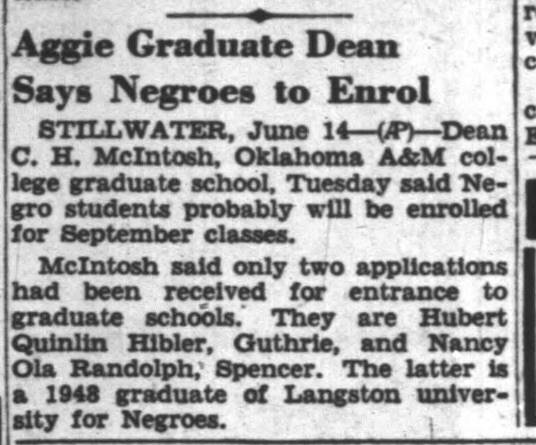
“According to [Nancy], she received encouragement to enroll at [A&M] from the U.S. Supreme Court’s groundbreaking decision to allow Ada Lois Sipuel Fisher to enter the University of Oklahoma, School of Law.”
“Upon her first encounter with the [A&M] Dean of Home Economics, [Nancy] received an unexpected rebuff. The dean told her that Negroes were pushing too hard, and she suggested that [Nancy] should go to Kansas, Colorado, or some other state where she would be accepted.”
“[Nancy] initially was required to sit outside the classroom in the hallway, but after making the second highest score on a test, her white classmates complained to the professor and she joined the other students in the classroom.”
In 1952, Nancy graduated with her Master’s Degree in Home Economics. Today, at OSU, the program is referred to as Human Sciences.
Nancy Randolph Davis continued her teaching career until she retired in 1991, a total of 43 years in education. She was active in “N.A.A.C.P. Youth, Oklahoma Retired Teachers Association, Langston University Alumni Association, OSU Alumni Association, and the OSU Black Alumni Association.”



She was recognized as a “trailblazer” in her role in the civil rights movement. She received many awards and achievements over the years, both during her lifetime, such as recipient of the Oklahoma Human Rights Commission’s Lifetime Achievement Award in 2008, and posthumously, such as being inducted into the Oklahoma African-American Educators Hall of Fame in 2015. Nancy O. Randolph Davis passed away on March 23, 2015.
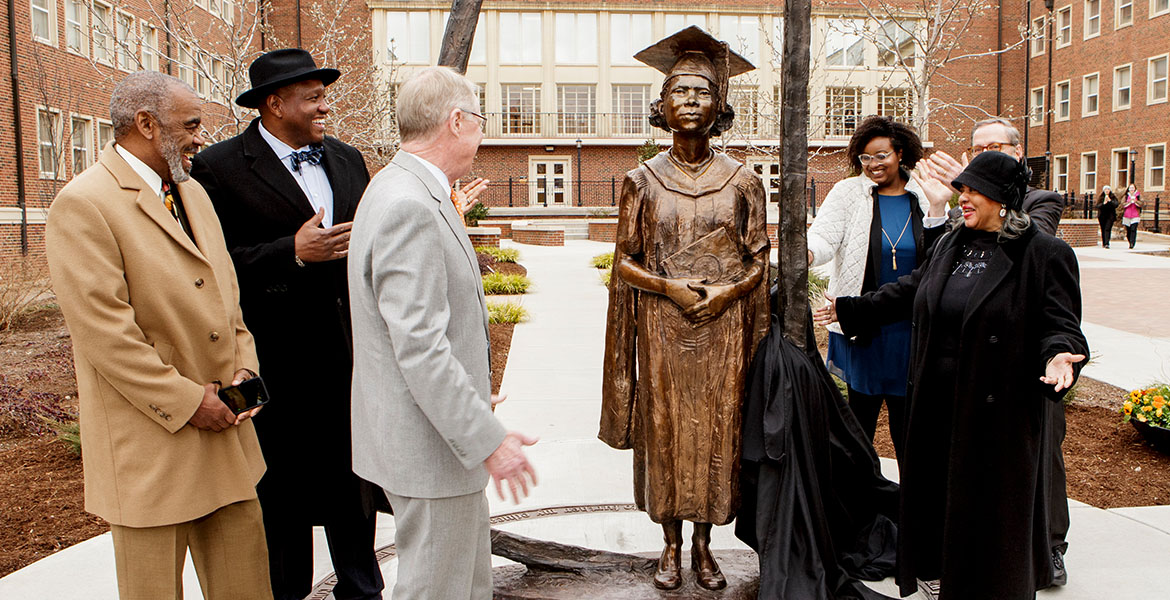
“Nancy Randolph Davis Day” is still honored at the OSU campus. There is now a building named after her on the Stillwater campus. In addition, there has been a highway named after her in Stillwater. In 2019, a life-size sculpture of Nancy Randolph Davis was dedicated in the courtyard of the building named in her honor.
Read more about OSU’s dedication to Nancy Randolph Davis here.
(Sapulpa Sunday Herald, June 26, 1949; Oklahoma Daily, June 11, 1949, June 15, 1949; Oklahoma City Times, June 15, 1949; Alva Review-Courier, June 15, 1949; Chronicles of Oklahoma, Vol. 90, No. 4, Winter 2012-2013; OSU, College of Education and Human Sciences)

